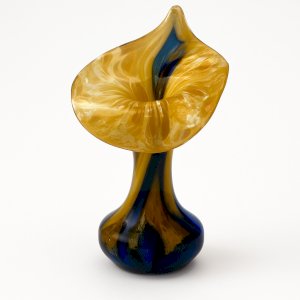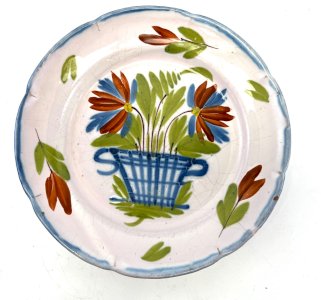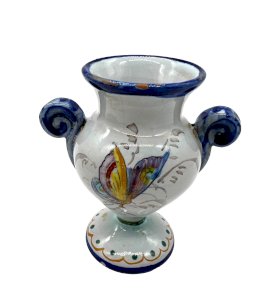- Sell Now
- Home
-
FURNISH
All STORAGE FURNITURE • Wardrobe • Chests of drawers, Chiffonnier • Sideboard • Shelves, Bookshelves • File cabinet • Sewing Furniture • Bar cabinet • TV Stand • Trunk, Chest TABLE & BEDSIDE TABLE • Dinner Table • Coffee table, side table, end table & Bedside • Console, Pedestal table & Selette • Serving Table, Trolley • Card Table • Draper's counter & table SEAT • Sofa • Armchair • Chair • Stool • Bench • Daybed • Beanbag & Footrest • Deckchair & Outdoor DESK, SECRETARY, DRESSING TABLE GARDEN LOUNGE BEDDING • Bed • Bedhead • Cradle, Moses basket CRAFT FURNITURE, WORKSHOP • Workbench • Stool, Ladder, Step • Easel & Trestle SCREEN PIANO
-
DECORATE
All TO PUT • Sculpture, Statuette • Vase & Planter • Dame Jeanne, Bonbonne & Flacon • Bridal globe, Dome • Pin tray, Ashtray • Candlestick & Candle • Photo frame • Stone, Fossil, Mineral • Earth Globe MIRROR WALL DECORATION • Painting • Engraving & Illustration • Poster • Tapestry • Wall Frame • Plate & Sign • Juju Hat & Wall Paniel • Mask • Hunting Trophy • Other object to hang CLOCK, PENDULUM & ALARM CLOCK ARRANGEMENT • Jar, Box & Case • Basket, Wastebasket & Crates • Magazine Rack & Vinyl Holder • Display & Spinner • Coat hook & Coat rack • Furniture Valet & Mannequin • Towel Holder • Suitcase & Travel Bag • Bottle Rack • Umbrella holder BATHROOM OFFICE • Mail holder • Bookends • Sulphide & Paperweight • Stationery FIREPLACE ACCESSORIES HOBBIES • Vintage Sport • Music • Vintage device • Smoking Item • Militaria, Ancient weapon • Miniature Vehicle • Game, Playing Cards • Collection object & Curiosity BIRD CAGE RELIGION, SPIRITUALITY
- TEXTURE
- ILLUMINATE
-
ACCOMODATE
All TABLE & SERVING • Plate • Silverware • Knife Holder • Glass • Bowl, Mug, Cup • Bowl, Ramekin & Cup • Dish, Cup & Salad Bowl • Tray, Basket & Server • Table Mat • Pitcher, Carafe, Bottle, Tea & Coffee Jug • Ice Bucket • Salt & Pepper shakers, Oil & Vinegar shakers • Sugar and jam maker • Gravy boat • Butter dish • Egg cup • Terrine OLD BALANCE CUTTING BOARD GRINDER CASSEROLE, SAUCEPAN & PAN KITCHEN UTENSIL & ACCESSORY
- TINKER
- KIDS
- Jewelry & Accessories
Login
Related Products
Description
Arithmometer ORIGINAL ODHNER GÖTEBORG Made In Sweden Calculating Machine 1930. The Odhner arithmometer is a calculating machine with direct addition and subtraction and which allows rapid multiplication and division thanks to a movable result plate. Invented in Russia in 1873 by Willgodt Theophil Odhner, a Swedish immigrant, engineer and entrepreneur, it would become extremely popular in the 20th century. A machine built under the direction of W.T. Odhner in Saint Petersburg towards the end of the 19th century Its industrial production officially began in 1890, in Saint Petersburg, and lasted only thirty years there, because the company was nationalized at the beginning of the Russian Revolution in 1917, and closed its doors definitively in 19181. Operation edit Drum sector A drum sector used in the manufacture of Odhner arithmometers. Odhner's arithmometer works thanks to a key part: the drum sector. This sector is composed of ten parts: nine "pins" (red) and a large part with the cursor (gray). When the cursor was moved, the pins moved up or down according to the number chosen. Development edit Odhner had the idea for his machine while repairing an arithmometer in 1871 (the arithmometer was the only mechanical calculator on the market at the time). He decided to replace the Leibniz cylinders, which made the machine heavy and bulky, with wheels with a variable number of teeth, which were lighter and much more compact. By keeping the same operating mode, he ensured immediate success. Odhner finished his first prototype in 1873. In 1876, he built 14 machines for Ludvig Nobel, his employer at the time. He completed these copies in 1877. He filed patents in Europe and the United States between 1878 and 1879 and a new patent in 1890. He began industrial production of his arithmometer in 1890. In 1891, he decided to expand production of his machine to Germany, but he had to sell it a year later, in 1892, because the distances proved too great for the time. 1 The new owner, Grimme, Natalis & Co, began production in Brunswick and sold the machine under the name Brunsviga (which is the Latin name for Brunswick). 2 After Odhner's death in 1905, his sons Alexander and Georg and his son-in-law Karl Siewert continued production, and in total 23,000 machines were built. The company was nationalized at the beginning of the Russian Revolution and closed its doors for good in 1918. Desktop calculating machines in production in the 19th century. Legacy and Heirs edit A descendant of Odhner's arithmometer produced around 1950. Russian manufacturing edit In 1924, the Russian government moved what was left of the factory from Saint Petersburg to Moscow and resumed production of the machine under the name Felix Arithmometer. Production of the Felix Arithmometer would total 300,000 machines produced by 19691. Swedish manufacturing edit AB Original-Odhner action dated August 1918. Towards the end of 1917, the Odhner family returned to Sweden and his son Alexander opened an AB Original-Odhner (sv) factory in Gothenburg which continued production. After Alexander's death, the company was sold to Atvidaberg Industries in 1942 (manufacturer of Facit calculating machines). It kept its name and its products kept the Original-Odhner brand because of the formidable reputation for reliability of these machines. In 1964, the millionth Odhner machine was manufactured. Then in 1965, the AB Original-Odhner company merged with Facit. The calculating machines produced by the Odhner teams kept the Odhner brand. Copies edit The Odhner arithmometer was copied, built and sold by many companies around the world. In France, there is Dactyle, in Germany there is Thales, Triumphator, Walther and Brunsviga. In England there is Britannic and Muldivo. In Sweden Multo, Facit. In Italy Imca. In Russia Felix, in Japan Tiger and Busicom, a small calculator company that became famous because Intel created the first microprocessor (the Intel 4004) accidentally while developing one of their calculators in 1970. Condition:Used: An item that has been used previously. See the seller's listing for full details... Used: An item that has been used previously. any imperfections. Subtype:Calculating machine
Réf :
#274804
Comments
Related Products
Description
Arithmometer ORIGINAL ODHNER GÖTEBORG Made In Sweden Calculating Machine 1930. The Odhner arithmometer is a calculating machine with direct addition and subtraction and which allows rapid multiplication and division thanks to a movable result plate. Invented in Russia in 1873 by Willgodt Theophil Odhner, a Swedish immigrant, engineer and entrepreneur, it would become extremely popular in the 20th century. A machine built under the direction of W.T. Odhner in Saint Petersburg towards the end of the 19th century Its industrial production officially began in 1890, in Saint Petersburg, and lasted only thirty years there, because the company was nationalized at the beginning of the Russian Revolution in 1917, and closed its doors definitively in 19181. Operation edit Drum sector A drum sector used in the manufacture of Odhner arithmometers. Odhner's arithmometer works thanks to a key part: the drum sector. This sector is composed of ten parts: nine "pins" (red) and a large part with the cursor (gray). When the cursor was moved, the pins moved up or down according to the number chosen. Development edit Odhner had the idea for his machine while repairing an arithmometer in 1871 (the arithmometer was the only mechanical calculator on the market at the time). He decided to replace the Leibniz cylinders, which made the machine heavy and bulky, with wheels with a variable number of teeth, which were lighter and much more compact. By keeping the same operating mode, he ensured immediate success. Odhner finished his first prototype in 1873. In 1876, he built 14 machines for Ludvig Nobel, his employer at the time. He completed these copies in 1877. He filed patents in Europe and the United States between 1878 and 1879 and a new patent in 1890. He began industrial production of his arithmometer in 1890. In 1891, he decided to expand production of his machine to Germany, but he had to sell it a year later, in 1892, because the distances proved too great for the time. 1 The new owner, Grimme, Natalis & Co, began production in Brunswick and sold the machine under the name Brunsviga (which is the Latin name for Brunswick). 2 After Odhner's death in 1905, his sons Alexander and Georg and his son-in-law Karl Siewert continued production, and in total 23,000 machines were built. The company was nationalized at the beginning of the Russian Revolution and closed its doors for good in 1918. Desktop calculating machines in production in the 19th century. Legacy and Heirs edit A descendant of Odhner's arithmometer produced around 1950. Russian manufacturing edit In 1924, the Russian government moved what was left of the factory from Saint Petersburg to Moscow and resumed production of the machine under the name Felix Arithmometer. Production of the Felix Arithmometer would total 300,000 machines produced by 19691. Swedish manufacturing edit AB Original-Odhner action dated August 1918. Towards the end of 1917, the Odhner family returned to Sweden and his son Alexander opened an AB Original-Odhner (sv) factory in Gothenburg which continued production. After Alexander's death, the company was sold to Atvidaberg Industries in 1942 (manufacturer of Facit calculating machines). It kept its name and its products kept the Original-Odhner brand because of the formidable reputation for reliability of these machines. In 1964, the millionth Odhner machine was manufactured. Then in 1965, the AB Original-Odhner company merged with Facit. The calculating machines produced by the Odhner teams kept the Odhner brand. Copies edit The Odhner arithmometer was copied, built and sold by many companies around the world. In France, there is Dactyle, in Germany there is Thales, Triumphator, Walther and Brunsviga. In England there is Britannic and Muldivo. In Sweden Multo, Facit. In Italy Imca. In Russia Felix, in Japan Tiger and Busicom, a small calculator company that became famous because Intel created the first microprocessor (the Intel 4004) accidentally while developing one of their calculators in 1970. Condition:Used: An item that has been used previously. See the seller's listing for full details... Used: An item that has been used previously. any imperfections. Subtype:Calculating machine
Réf :
#274804
 English
English  Français
Français 



























